Clustering approach to quantify long-term spatio-temporal interactions in epileptic intracranial electroencephalography
- PMID: 18317515
- PMCID: PMC2248704
- DOI: 10.1155/2007/83416
Clustering approach to quantify long-term spatio-temporal interactions in epileptic intracranial electroencephalography
Abstract
Abnormal dynamical coupling between brain structures is believed to be primarily responsible for the generation of epileptic seizures and their propagation. In this study, we attempt to identify the spatio-temporal interactions of an epileptic brain using a previously proposed nonlinear dependency measure. Using a clustering model, we determine the average spatial mappings in an epileptic brain at different stages of a complex partial seizure. Results involving 8 seizures from 2 epileptic patients suggest that there may be a fixed pattern associated with regional spatio-temporal dynamics during the interictal to pre-post-ictal transition.
Figures

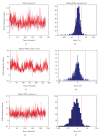


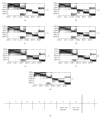
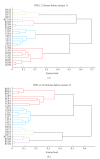
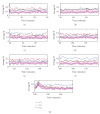
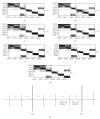
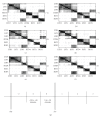
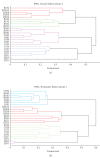

References
-
- Iasemidis LD, Principe JC, Czaplewski JM, Gilman RL, Roper SN, Sackellares JC. Spatiotemporal transition to epileptic seizures: a nonlinear dynamical analysis of scalp and intracranial EEG recordings. In: Lopes da Silva FH, Principe JC, Almeida LB, editors. Spatiotemporal Models in Biological and Artificial Systems. Amsterdam, The Netherlands: IOS Press; 1997. pp. 81–89.
-
- Iasemidis LD, Olson LD, Sackellares JC, Savit RS. Time dependencies in the occurrences of epileptic seizures. Epilepsy Research. 1994;17(1):81–94. - PubMed
-
- Blinowska KJ, Kuś R, Kamiński M. Granger causality and information flow in multivariate processes. Physical Review E. 2004;70(5):4 pages.050902 - PubMed
-
- Arnhold J, Grassberger P, Lehnertz K, Elger CE. A robust method for detecting interdependences: application to intracranially recorded EEG. Physica D. 1999;134(4):419–430.
-
- Hegde A, Erdogmus D, Rao YN, Principe JC, Gao JB. SOM-based similarity index measure: quantifying interactions between multivariate structures. In: Proceedings of the 13th IEEE Workshop on Neural Networks for Signal Processing (NNSP '03); 2003; Toulouse, France. Sep, pp. 819–828.
LinkOut - more resources
Full Text Sources

